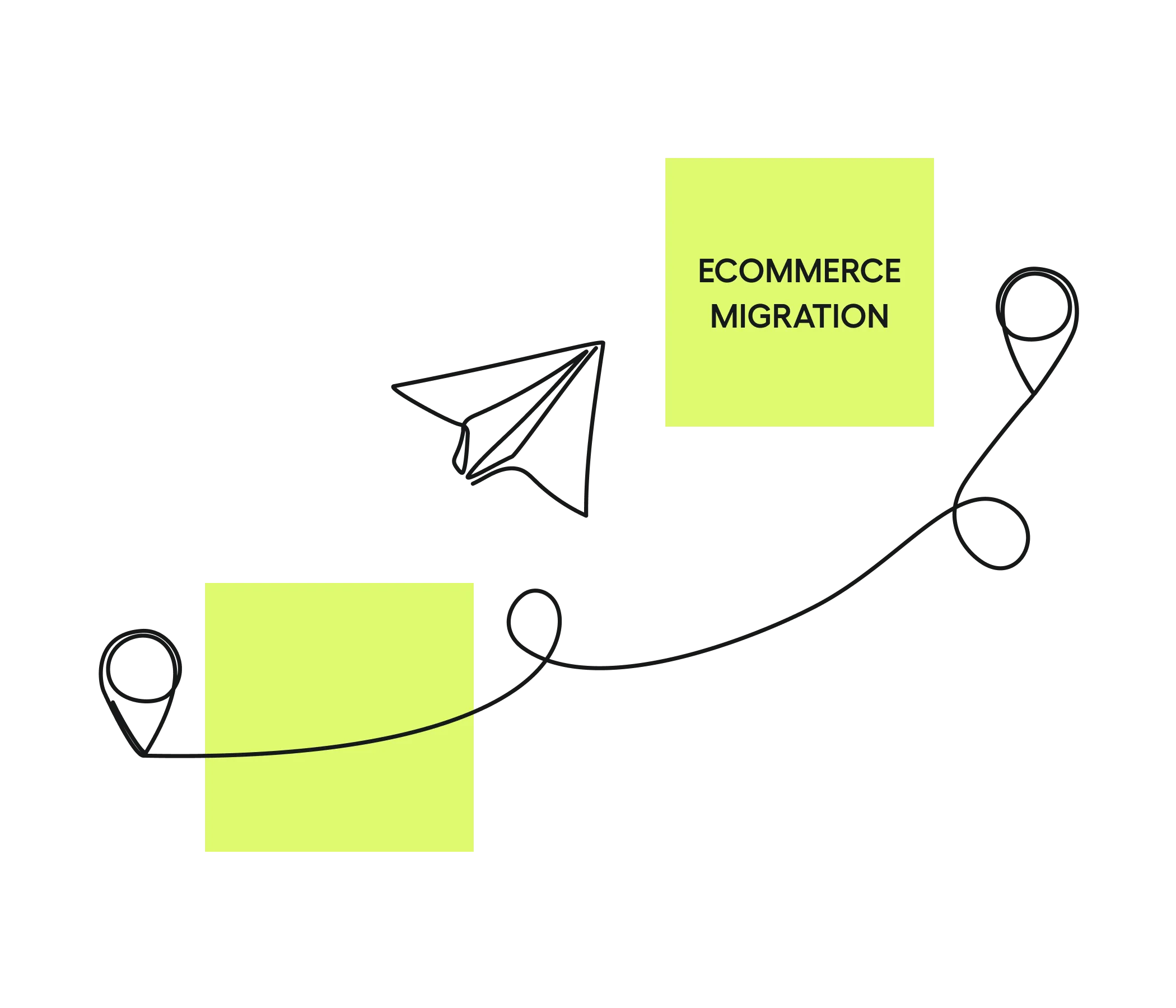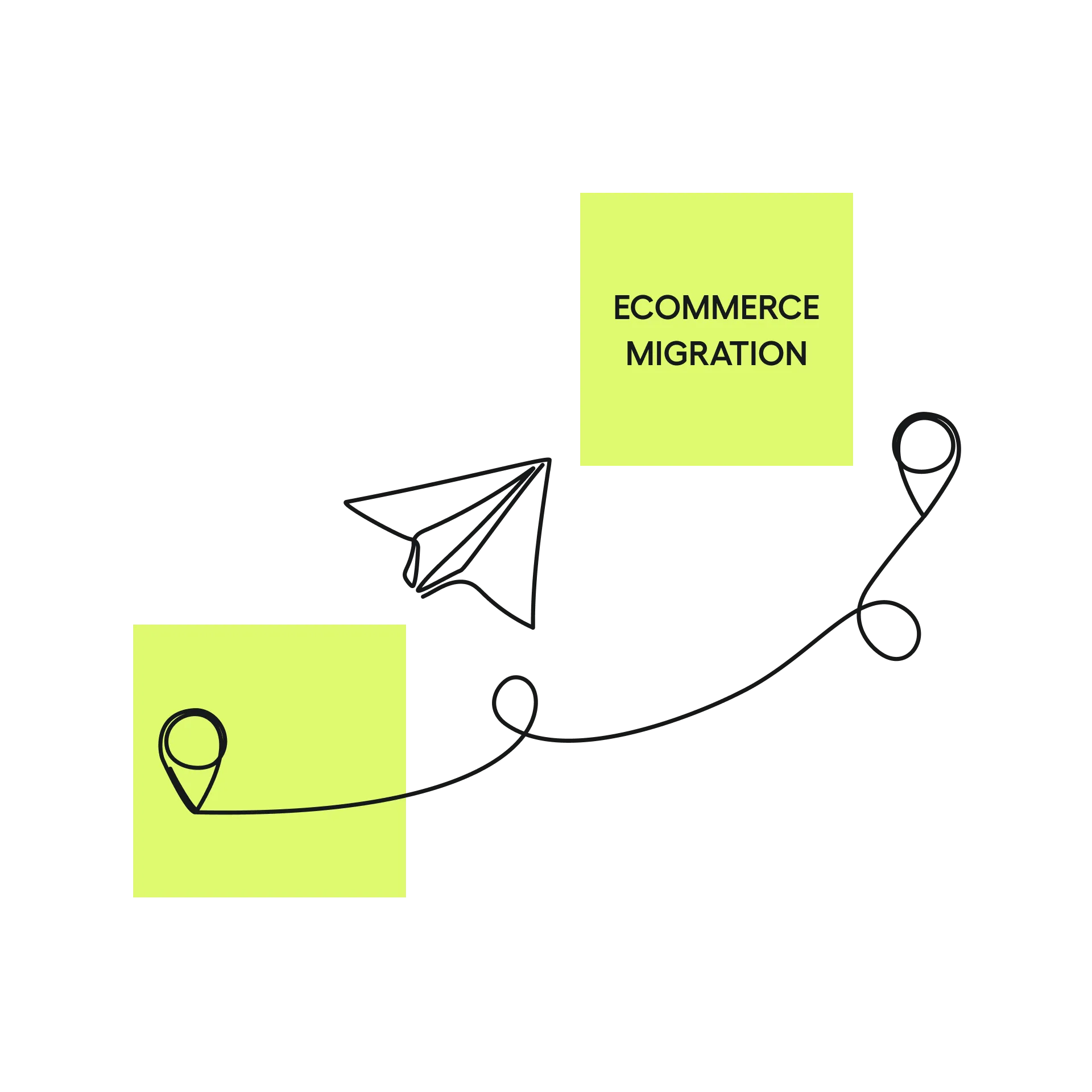

eCommerce Platform Migration refers to the process of transferring an online store from one platform (engine) to another. It involves migrating data, settings, and store functionalities—including products, orders, customer accounts, and SEO configurations. Essentially, migration is like creating an entirely new store but in a way that ensures end-users don't notice a drastic change. The goal is to enhance usability, boost performance, and achieve greater stability and flexibility, enabling future growth.
Online store migration can involve:
- Moving to a completely new platform (e.g., from PrestaShop to Shopify or WooCommerce to Magento)
- Upgrading to a new version of the same platform (e.g., from Magento 1 to Magento 2)
- Shifting to a different architecture (e.g., from a monolithic setup to headless and microservices architecture)
Is it time to migrate your online store?
Switching platforms is a significant challenge, so before making a decision, it’s essential to assess whether your current technology truly supports your store’s growth. If it lacks scalability, performance, or the ability to implement changes easily, it may be a sign that migration is inevitable. Here are common situations where eCommerce owners decide to move to a different sales platform.
01 / Store works too slow
If visitors have to wait for pages to load, this is a serious issue. A slow platform leads to frustration, higher bounce rates, and lower conversions, ultimately impacting your revenue negatively.
02 / Scalability issues
If your platform struggles to handle growing traffic, an increasing number of orders, or expanding product offerings, it's time to consider a solution that allows for seamless scaling of power and resources as your business grows, without sacrificing service quality.
03 / Outdated technology
If your platform no longer receives regular updates, causing you to miss out on new features and technologies that could enhance customer satisfaction, it's time to consider migration.
04 / Poor user experience (UX)
If customers find it difficult to navigate your store, the checkout process is complicated, and the platform doesn’t allow for personalization, it can lead to not only low customer satisfaction but also decreased loyalty.
05 / Security vulnerabilities
If your platform doesn’t receive regular security updates, is prone to attacks, or limits the ability to meet the latest security standards, this can put your business and customer privacy at risk.
06 / Vendor lock-in
If your software provider has exclusive control over its development with long delivery times, coupled with an unfavourable warranty policy and a lack of prompt technical support, it’s a clear sign to migrate to a platform that offers you more independence.
What does eCommerce migration involve?
eCommerce migration is a complex process that includes transferring various elements, often dependent on the specifics of your store. Beyond product data and order history, it’s essential to migrate the store’s theme to maintain visual consistency. Equally important is transferring all integrations, extensions, and SEO elements to retain your existing search visibility. This ensures a smooth transition without losing functionality or traffic.
Theme Migration
Product Migration
Custom Solutions Migration
SEO Migration
Order History Migration
Magento Migration - why should you bet exactly on this platform?
When selecting new technology, it’s crucial to invest in a future-proof solution that ensures stability and flexibility for years to come. Magento is a platform that not only supports your current needs but also enables the dynamic growth of your business.
With its open-source code, Magento allows complete customization to meet your unique requirements and seamlessly integrates with external systems. It offers limitless possibilities for expansion and the introduction of innovative features as your business grows. So, why should you consider migrating to Magento?

Magento handles not just an increasing number of products and users but also supports international sales. The platform makes it easy to manage multiple currencies and languages, allowing you to expand into new markets effortlessly.

The platform provides advanced customization options for both store design and functionality. This enables your eCommerce store to perfectly match customer expectations, delivering exceptional shopping experiences.

Magento offers extensive integration capabilities with various external systems, including ERP, CRM, and analytics tools. With its robust API, these processes are quick and easy to implement, promoting automation and improving business efficiency.

Regular updates, high-security standards, and the ability to implement additional protective measures make Magento a secure choice for your business and customer data.

Magento features an intuitive admin panel that simplifies managing every aspect of your store, from products to orders. This streamlines daily operations and enhances team efficiency.

Magento simplifies managing sales across multiple channels (e.g., your website, marketplaces). This solution increases your store's reach, ensuring a consistent experience for customers no matter which channel they use.
How to migrate the platform to Magento?
Migration is a large-scale project that requires carefully planned stages. At Advox, we have developed a proven process that enables a fast and secure implementation of the new platform. Our approach not only facilitates quick adaptation to new solutions but also ensures store continuity without downtime.
Here’s a step-by-step breakdown of how an effective migration takes place:
We know what’s on your mind. Frequently asked questions about online store migration
eCommerce migration involves transferring an online store to a new platform, which includes migrating all critical data, such as products, orders, customer information, and functionalities that make up the online sales environment. It also requires adjustments for SEO, integration with external systems, and optimization of features. Store migration is often undertaken to achieve better performance and flexibility, aligned with future growth needs.
The timeline for migrating to Magento depends on several factors, such as the store’s size, the complexity of its features, and customization needs. Simple stores using ready-made templates can be migrated within a few months, while more complex projects that require extensive customizations and integrations may take longer. An accurate time estimate requires a detailed analysis of your current infrastructure to ensure a smooth and efficient transition.
The cost of migration varies based on factors such as store size, the volume of data to be migrated, customization requirements, and integration needs with external systems. Costs include data transfer, feature adjustments, development of new modules, and implementing performance improvements to align the store with new demands. Additional costs may involve SEO migration, performance optimization, and post-launch technical support. The complexity of the project directly affects the timeline, which also impacts the cost. For Magento 2, the minimum starting cost typically won’t be less than 200 000 PLN (around 46 000€).
Choosing the right eCommerce platform depends on your business needs. If you’re looking for greater flexibility, scalability, and full control over functionalities, Magento can be an ideal choice. With its robust capabilities, Magento is a popular option for businesses focusing on long-term growth and needing a platform that can scale with them. It’s especially suited for complex stores that require advanced customization options, integration with various systems, and support for international expansion.
When choosing a software house for your store migration, consider a few key factors. First, experience with similar projects, especially migration to your chosen platform, is crucial. Second, project management skills and the availability of a dedicated team responsible for implementation are important. Communication is also key - look for transparency, responsiveness to client needs, and regular progress updates. Lastly, post-migration technical support is essential to ensure the store operates smoothly and allows for ongoing improvements.
Migration is the first step to better online sales!
Contact us!









